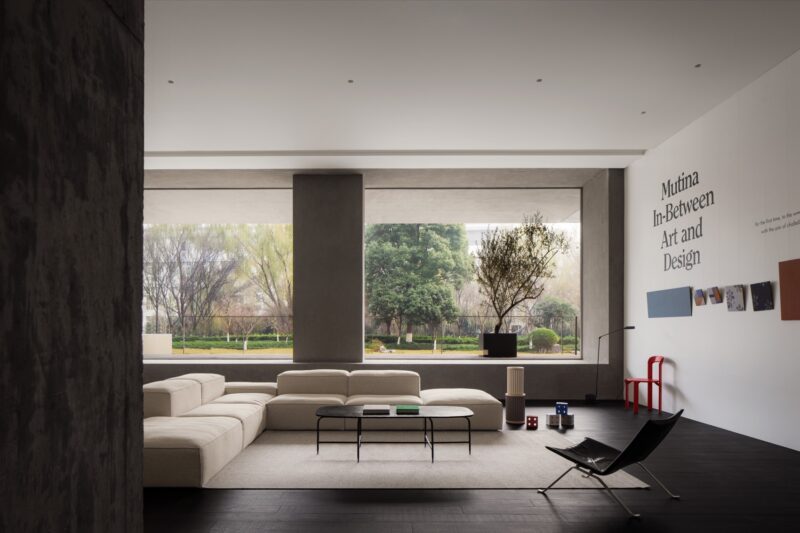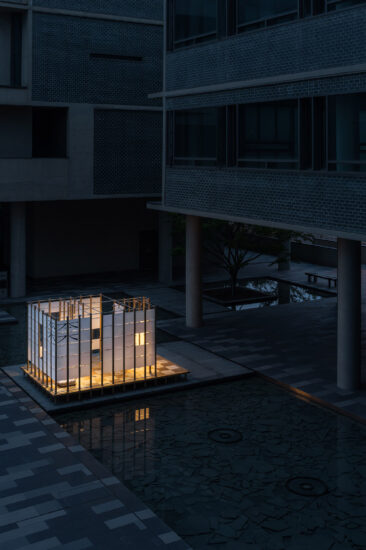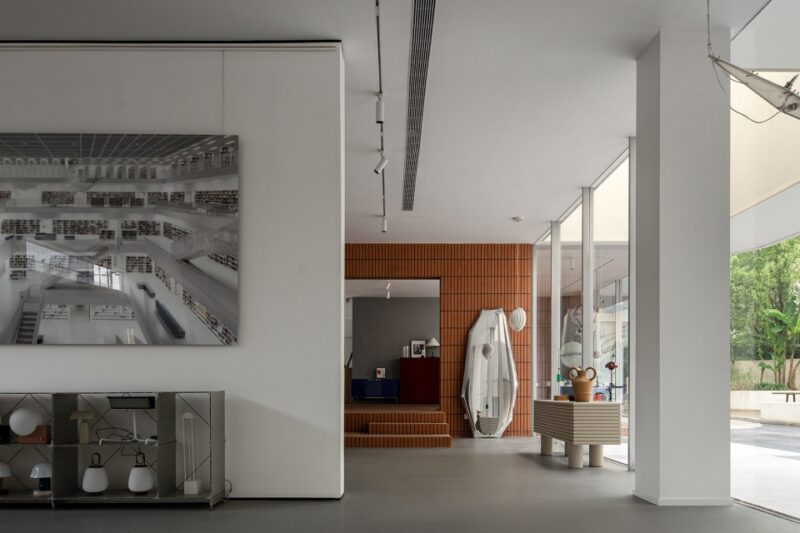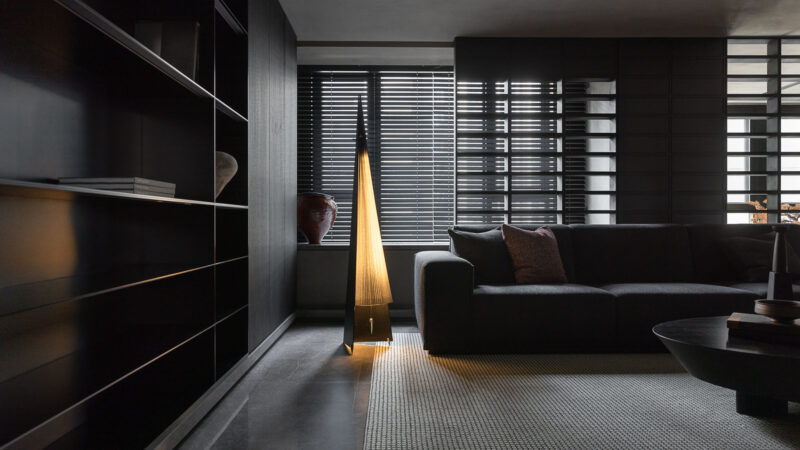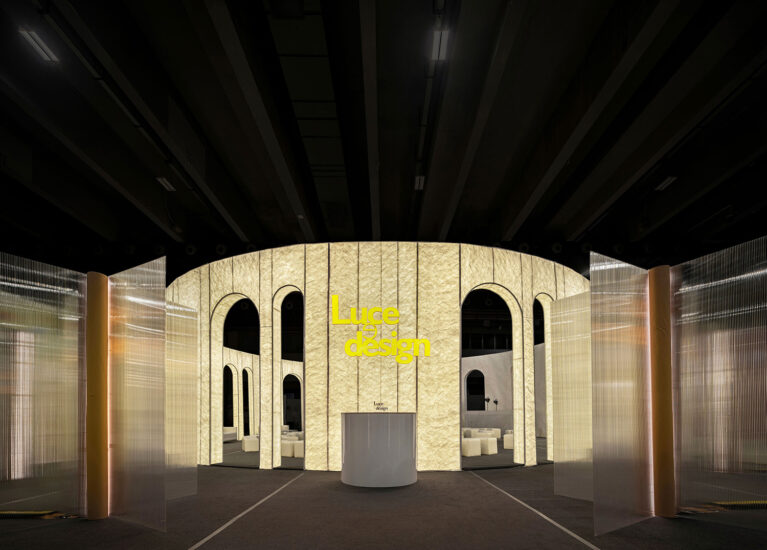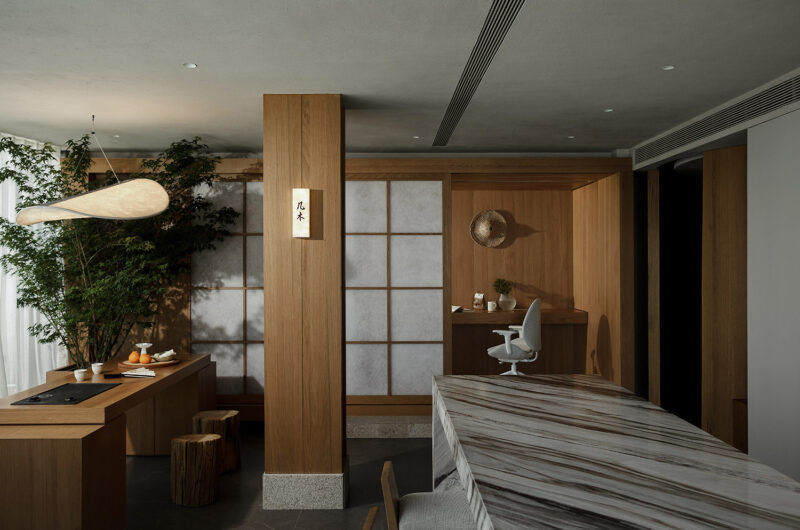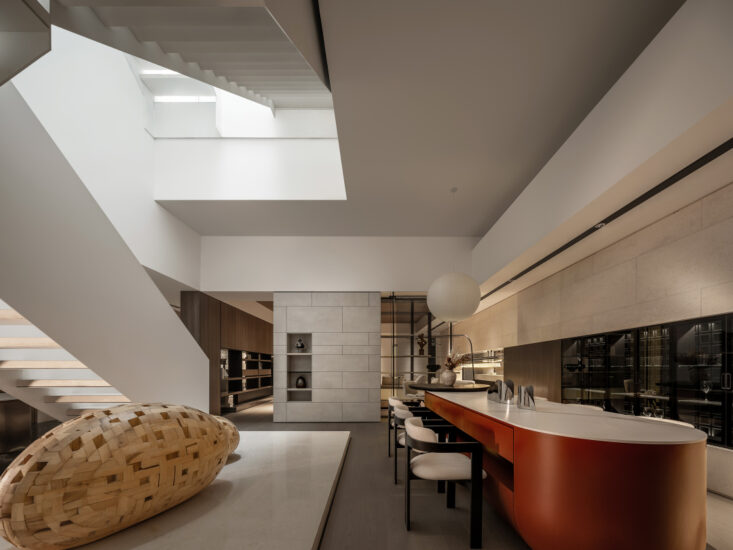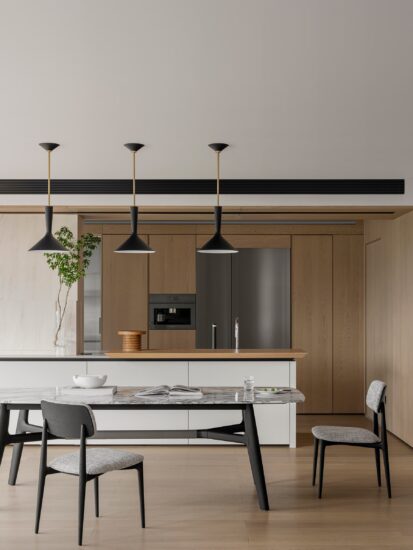全球设计风向感谢来自万社设计的展厅项目案例分享:
Breaking Boundaries | 打破固有使用边界:是椅子、桌子、墙、建筑?
Breaking Boundaries | Chair, Desk, Wall or Architecture?

此次在深圳市室内建筑设计行业协会的邀请下,万社设计作为深圳这个城市的代表,接受了设计in湾区展厅的设计委托。
Entrusted by Shenzhen Institute of Interior Design, Various Associates conceived the pavilion for DESIGN IN BAY AREA Exhibition, as the representative of Shenzhen.


此次展厅联合了粤港澳大湾区含香港、澳门等八大城市21位设计师联合策展。设计方需要考虑深圳作为牵头城市的特殊身份,同时还需兼顾不同城市设计协会自身的需求及个性。
DESIGN IN BAY AREA was co-organized by several design institutes from the Greater Bay Area, and was co-curated by 21 designers from 8 cities in the region. As conceiving the exhibition hall, Various Associates had to consider Shenzhen’s leading role in this event while also taking account of the demands and characters of all design institutes involved.
01 概念 Concept
回顾深圳,这座充斥着时代魅力的现代大都市,有赖于沿海这个得天独厚的地理环境,海港贸易成为了深圳经济结构的主体之一。与此同时,人才,正是触发城市快速成长的重要基因之一,人才的聚集就像是浪潮一样推动着城市的发展。
With favourable geographic conditions, Shenzhen has developed into a charming modern metropolis over the decades, and trade ports have become one of its economic pillars. Meanwhile, like ocean waves, talents are rapidly pushing the city forward.
“海洋,容纳百川”,如深圳这个城市,拥有着源源不断的生命力但异常的包容。万社以此为创作源泉及线索将各城市的展览包围在一起,希望各个城市的文化能够在这个平台上相互交流融合,同时也希望以此表达出设计的无边界性。“海浪Wave”的故事线由此诞生。
The sea is inclusive as it admits hundreds of rivers, so is Shenzhen. It’s a quite inclusive and vigorous city. Various Associates took its character as the design inspiration and thread, which surrounds the exhibitions of the eight cities. The team hoped to enable cultural exchanges and fusion among the cities, and to express the infinities of design. That’s how the design concept and storyline “Wave” came into being.
∇ 图源网络 Concept (image from Internet)

02 雏型变形过程 Prototype generation
具象Concrete image
∇ 图源网络 image from Internet

线性Curves

填充Deepening

如波浪一样,层层叠叠,可自由组合高度
Like weaves, modular units can be freely stacked and combined at staggering heights

这个项目的设计初衷,万社希望能够通过可循环利用的建造方式以减少对资源及物资的浪费 。模块化搭建无疑是最好的选择。可通过对单体模块的重复拼接,迅速完成场地的搭建及拆卸,同时便于运输及收纳。 而基于环保,材料上则希望摒弃没有情感色彩的钢筋水泥结构,沿用通过回收废弃塑料或废弃木料再加工而成的板材,从而达到循环再利用。
Various Associates adopted recycled materials and modular construction method to reduce waste. The modular units enabled rapid assembly and disassembly on the site, and were also easy for transportation and storage. The design team abandoned “cool” reinforced concrete structures, but chose panels made from waste plastic and wood instead, to realize recycle and reuse of materials.
03 废弃塑料/废弃木料再利用 Reuse of wasted plastic & wood
∇ 图源网络 image from Internet


04 是椅子、桌子、墙、建筑?Chair, desk, wall or architecture?

除了概念及材料外,万社希望打破固有使用边界,展示模块、空间、建造之间更丰富的多变性及可能性。在深化模块的形式时,将模块产品化功能化成为另一个万社着手思考和设计的方向。联想到家具制造业作为深圳另一张靓丽的城市名片,将模块本身设计成家具在单个存在也有自己的价值,无疑使这个设计的组合更具有趣味性。
Various Associates intended to break the boundary of the structures, which can shift among modules, space and architecture, in order to show more variations and possibilities. As deepening the form, the team also emphasized the productization and functionality of modules. Moreover, considering that furniture manufacturing industry is another distinctive feature of Shenzhen, the designers turned each modular unit into a valuable piece of furniture, which can be combined in various playful manners.
“我们希望打破产品单一的功能限制。例如桌子这样生活中一个简单且常见的物件,也可以变成墙、空间、及建筑,而不单一地局限于其本身固有的功能。我们希望可以向大众开放及展示设计更多的趣味性及想象力,让大众更容易感受到设计的魅力所在。”万社设计创始人如是说。
“We hope to break the singular function of products. For instance, desk is a simple and common object in our daily life, but it can also be turned into wall, space or architecture rather than being restricted to its inherent function. We want to show the public more fun and imagination, and allow them to easily perceive the charm of design.” Various Associates founder explained.
在设计模块之间的结合方式时,设计团队也参考了传统榫卯结构及木家具结合的方式,再加以海浪的流线从而得出最终的单个的模块形状,取名为“浪花”。
As conceiving the modules, the design team referred to traditional mortise-and-tenon joints and the way that wooden furniture is assembled, and at the same time incorporated the flowing form of ocean waves. In this manner, they eventually figured out the shape of modular units, which were named “Wave”.
下图为部分市面上常用榫卯结构及木家具节点的展示
Common mortise and tenon joints & joints of wooden furniture

“浪花”的拼装方式-使用榫卯结构的原理Assembly of “weaves”


当“浪花”单个出现,可以是椅子、桌子、装置……
Single wave can be a chair, desk, installation…

当“浪花”组合成“海浪”,可以是围墙、结构、建筑……
Waves can an enclosure wall, structure, architecture…
椅子Chair

长桌Desk

围墙Enclosure wall

小型pavillionSmall pavilion

05 搭建 Assembly


06 开放日 Open day







万社最后采取以环保、可持续及可量化的设计手法去打造空间的形状及动线的方案,将产品、家具、展厅这三种元素巧妙地结合在一起,使得整个空间造型可随着场地自身的需求及状况灵活更改。
The designers adopted environment-friendly, sustainable and quantifiable design approaches to work out the spatial pattern and circulation solutions, while also time subtly integrating the elements of products, furniture and pavilion, thereby producing a flexible spatial form that can be adjusted on the site according to different demands.
07 拆卸 | 再利用 Disassembly & Reuse



在展览结束后,本着减少临时材料污染、环保、及再利用的设计初衷,万社设计委托举办方及撤展方将“浪花”原地拆卸后回收,而后运往由我们设计的一个学校项目里,在新的地方延续自身的故事,实现了我们本身的用意以及目的。
Bearing in mind the intentions of pollution reduction, environment protection and material reuse, Various Associates entrusted the organizer and the party in charge of dismantling work to recycle the modules after the exhibition, and send them to the next destination,a school project they are working on.
此次设计“海浪”将作为一个案例用于艺术高校日常的艺术教学板块“模块搭建”里,同时以装置及桌椅的使用功能实践着万社设计的初衷。
Those “Waves” will be utilized to modular assembly in art teaching activities in Art high school and will be also turned into installations, useful tables and chairs.
项目信息
委托方:深圳市室内建筑设计行业协会
地址:深圳国际会展中心
状态:完成于2020.08
设计团队:万社设计
项目负责人:林倩怡
设计师:杨东子、李泽兵、林志超
摄影师 记录照片:李泽兵;落地照片:李永茂
Client:Shenzhen Institute of Interior Design
Location:Shenzhen World Exhibition & Convention Center
Status :Completed, Aug 2020
Design team:Various Associates
Project leader:Qianyi Lin
Designer team:Dongzi Yang 、Zebing Li 、Zhichao Lin
Photographs :Zebing Li ;Yongmao Li


